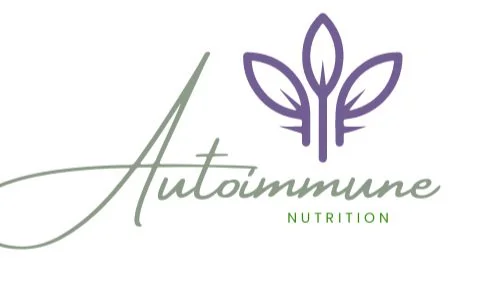How not to go gluten-free
What’s that? Yes, you read that right. This post is about how not to start a gluten-free diet. I want you to know what not to do - because I’ve been there and I’ve done most of these things, too.
Here are 5 mistakes I’ve seen people make when starting a gluten free diet.
What not to do: Switch to gluten-free processed foods
Bring on the gluten free cookies, bread, pizzas and sweet treats! I have to agree, it’s so convenient to be able to get gluten-free breads, pizza crust and even gluten-free donuts. It does make our lives easier and I’m no exception here. Eating gluten-free is much easier than it used to be.
Why you should be careful: Processed gluten-free foods are often deficient in nutrition, such as iron, calcium, folate and B12. If you're just switching to gluten-free after a celiac diagnosis, you probably already have nutrient deficiencies because of malabsorption. Due to their high carb content, these foods can spike your blood sugar and lead to insulin resistance (the precursor to diabetes and a condition which causes you to store fat in your mid-section).
Ingredients to be careful of are tapioca starch and potato starch as the primary ingredients (high carbs), white rice as a primary ingredient (remember, it will spike your blood sugar), inflammatory oils such as canola, and of course sugar. I wouldn’t expect anyone to avoid these foods 100%, but eat them in moderation.
It’s easy to fall into the trap of purchasing gluten-free substitutes for what you were buying before you cleaned up your diet, and it takes time to make these foods at home. When you can, try batch cooking, making a big batch and freezing some for weeks when you won’t have time to cook or bake. Focus on eating real foods - vegetables, fruits, eggs (if you’re not on AIP), nuts and seeds (if you’re not on AIP), and high quality meats that are naturally gluten-free.
What not to do: Don’t read ingredient labels
Probably, before you started to eat gluten-free, you saw something that looked yummy, picked it up and threw it in your cart. Or you went to your favourites and bought the same things every week.
Don’t do that anymore.
Why you should be careful: Gluten can hide in ingredients you don’t suspect being a problem. Soups, salad dressings, soy sauce, cereals, vegetarian meat substitutes, candy… the list goes on. Some companies change their formulas without warning, so even if you checked something last year, it never hurts to check again.
If you’re celiac, look for a certified gluten-free mark on packaged foods (the exact symbol will vary from country to country). Check out the Gluten Intolerance Group’s list of foods where gluten might be hidden. And if you get glutened by accident, read my post on what to do.
What not to do: Shop at your regular grocery store
So you know you need to eat gluten-free, you go walk around the grocery store and you don’t see much. You’re frustrated and annoyed.
Why you should be careful: Your regular store may not have the right choices to help you on your health journey. As mentioned above, some gluten-free processed foods are nutrient-deficient. And some stores may not have a lot of gluten-free products, which may leave you tempted to buy regular food so that you don’t go without. You’ll likely have to start shopping at a different grocery store or a health food store to get a better selection of foods with higher quality ingredients. Changing where you shop can, honestly, be a game changer.
What not to do: get depressed about the foods you think you can’t eat
It’s easy to focus on what you can’t have and to ask yourself, will I ever eat another gooey cinnamon bun? What about donuts, danishes, and all those sweet treats that I got used to? You’ll end up feeling deprived and depressed - I’ve been there!
What to do instead: Focus on what you can eat. Focus on unprocessed, whole foods like meats (the higher quality the better), vegetables and fruits, and healthy fats. Eggs, nuts and seeds are good sources of proteins and healthy fats if you’re not on the autoimmune protocol (AIP). Look for recipes online, check out the library for cookbooks, take an evening cooking class, and above all be patient with yourself while you learn and adapt.
What not to do: Forget why you are doing this
Face it, this is hard. Your co-workers are bringing cakes to work to share and you can’t have any. You’re travelling and can’t find anything to eat. The cafeteria at work doesn’t have anything you can eat.
You wish you could just eat like other people.
Why you should be careful: It’s easy to fall back into old habits. You’ve started feeling better since giving up gluten-containing foods, and now you know where to get the best gluten-free pizza and even figured out how to make your own.
But some days when you’re tired, it’s just so hard. I’ve been there. I’m gluten-intolerant, and if I accidentally eat gluten, I end up in the washroom in a lot of pain. Remember your why! You want to feel better, not have digestive symptoms or autoimmune flare-ups. You want to feel like yourself again and get your life back.
I’ve got your back!
I’m a certified holistic nutritionist with gluten-intolerance and Hashimoto’s, an autoimmune condition. I’ve been gluten-free for over ten years. To get personal support on your health journey, click here to learn about how you can work with me.
